Why You Need To Store The Right Food Storage
Do you sometimes wonder why you need to store the right food storage for your family? It’s a little overwhelming sometimes. Should I buy freeze-dried, dehydrated, or what? Do you remember when you were growing up and our parents had a few 50-pound or 100-pound cans filled with powdered milk, beans, and sugar?
Our cans were shiny green. You can probably picture the wooden shelves filled with jars of canned fruits and vegetables. You know, all the food storage we could see at a glance and appreciate what we had stored for emergency food supplies, just in case. There is nothing more exciting than seeing the food that we produced from the garden stored on shelves for the family for the year. Augason Farms Dehydrated Potato Shreds
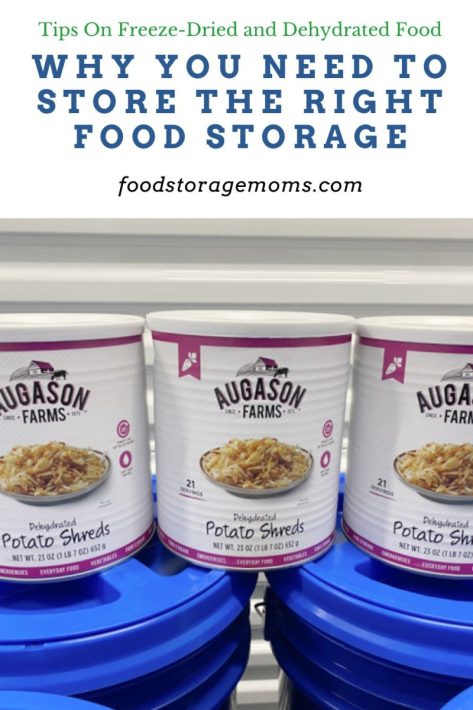
USDA Canning
Here’s the deal, life is busy and I realize canning is not as popular as it was years ago. You can call those vintage skills or pioneer skills, either way, the USDA is no longer having testing kitchens for canning food. I learned this a few years ago when I took classes to get certified in the Master Canner Preserver Class from The USU Extension Service when I lived in Southern Utah.
I was shocked to hear this, but according to the USDA, people would rather buy fresh food in season, or fruits and vegetables in cans or down the frozen aisle of their local grocery stores. Fast forward to this year, I think things have changed. I wrote this post back in 2019 and now I’m updating it.
More and more people are back to preserving their food via water bath canning and pressure canning. Plus, now there are freeze dryers available for sale. Dehydrating food has been around for a long time and people now make powders with their dehydrated foods.
I still bottle a few jars here and there, not like I did when I had four daughters helping to do the work. I don’t have access to fresh fruit like I did when we lived closer to places like Brigham City and their farmer’s markets. Some of us are getting older and no longer want to bottle or can 50 jars of peaches or jams and jellies, I get it. Let’s talk about the right food storage for you today. I’ll share some that I like to store.
Right Food Storage For You:
This is truly a personal topic because we all have different situations in our lives, including our budgets. Here are some of my suggestions. Please note that I use some of my food supply monthly and rotate it as needed while checking on the expiration date of the items used. I only buy fruits, vegetables, meats, cheese, and all the basics to cook from scratch.
Freeze-Dried Food:
The great thing about freeze-dried food is you can eat the food right out of the can. Some of the fruits, like pineapples, strawberries, and apple slices are my favorite healthy snacks. You can eat green beans and corn right out of the can too, easy peasy to use if you have a can opener. Please remember to store a few good can openers. This one works great for the #10 cans, Commercial Can Opener
I can never have too many freeze-dried items in my long-term food storage inventory. No water is needed unless you are going to cook with them. Please don’t use hot water with the freeze-dried cheese, yep it will cook it. I ONLY use tepid water with ALL freeze-dried food. Soak as noted on the cans, drain the water, and use in your recipes as you would fresh food.
Pros:
Freeze-dried food in #10 cans will store longer than dehydrated foods. Typically 25 years if unopened and in a room with a temperature of 55-70 degrees or so. Check with the manufacturer where you purchase your food storage in #10 cans. I only buy from Thrive Life for my freeze-dried items. Now I buy Thrive Life Pantry size cans, they are smaller and a good size for one to two people.
I always check the price per ounce and include the shipping costs to decide which company I will purchase from. We have more choices than ever now, because of the unstable events going on in the world. Augason Farms, Nutri Store, and Emergency Essentials are also good choices.
Cons:
I almost hate to write a con because it’s the best way to buy the right food storage for long term. The con would be they are more expensive. But for me, I can sleep at night knowing those cans will last my lifetime. So, unless you’re using them all the time, and not just for reserve, they are very cost-effective since you don’t have to replace them as often.
Commercially Dehydrated Foods:
This is a little more tricky because most commercially dehydrated food in #10 cans has a shorter life as your survival food resource. After all, it is processed differently than freeze-dried. The only time I use dehydrated food is for cooking soups because they need so much water to rehydrate them.
Pros:
They are cheaper than freeze-dried fruit and vegetables. These are cheaper to store and cook with even compared to fresh foods, in many cases. No chopping, peeling, etc. No waste, it’s fabulous.
Cons:
Shorter shelf-life compared to freeze-dried fruit and vegetables. etc. You can’t eat them right out of the can, you may chip a tooth and there isn’t much flavor. Shelf-life is typically 7-8 years. Check your manufacturer notes on the cans for suggested time frames.
Home Dehydrated Foods:
Now, I love using my Excalibur dehydrator with a timer. It’s fabulous, but I don’t dehydrate for long-term storage. I dehydrate any excess fruits to make healthy snacks. I dehydrate vegetables for soups and stews.
I love buying frozen vegetables because they are ready to dehydrate and use less space in a quart jar than the space they take in the freezer. I use them for soups and casseroles. Storage life is generally one-year maximum using my FoodSaver without oxygen absorbers.
Pros:
They are almost free because we are not wasting them, we are dehydrating them for another meal.
Cons:
Short shelf-life, one-year maximum.
Store Purchased Cans:
Here’s the deal, I hope you buy some cans that every family member would eat after a short-term disaster. Buy case lots for your non-perishable foods when they are on sale and only buy the ones your family likes to eat.
Pros:
You can use a can opener and a meal is ready in minutes with or without heating it on a cooking device.
Cons:
They don’t have a long shelf life, typically two to five years, and then the food starts tasting like the can. I often wonder what is being absorbed in the food from the can, but what can we say, it’s in a metal can. I know I have eaten cans of food that are older than 5 years, it’s the tomato products I worry about the most. Tuna gets mushy but is still edible.
*****Please note, if you bottle/can your food, you need to remove the rings on the bottles before storing them so you know if the canning lids have stayed sealed.
What are some other considerations when storing food?
Some important issues to consider are health-related. Generally, freeze-dried and dehydrated foods maintain their nutritional value over time. You need to consider buying foods that have protein, vitamins, minerals, and fiber we need daily for good overall health.
A complete diet needs to include fruits and veggies. Plan to store things like peas, corn, green beans, lentils, and legumes. We all love canned peaches, cherries, apricots, and citrus fruits like oranges, tangerines, and grapefruit. Don’t forget herbs and spices, particularly salt and pepper. We also need some fun foods that may not last as long but we love like peanut butter and other nut butter choices, jams and jellies, beef jerky, crackers, and some condiments like mustard and mayonnaise.
Remember that you can get complete protein from items like beans. If you’re a meat lover, protein can be found in canned meats, whether it’s beef, chicken, pork, or fish, like salmon. There are shelf-stable dairy products that provide the calcium you need, but they won’t last as long on your shelf. That may include some formula for your infants.
You should have a good supply of things with long-term storage attributes so you aren’t having to replace them all the time. That would include rice, beans, pasta, and grains like whole wheat and oats.
Final Word
Thank you for buying the right food storage for your family today, not tomorrow. Let’s teach the world to be prepared for the unexpected and have our pantries and basement shelves full of quality food choices. May God Bless this world, Linda

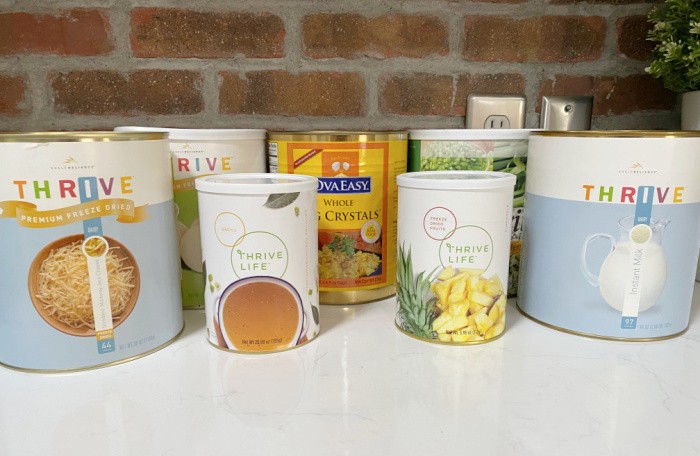

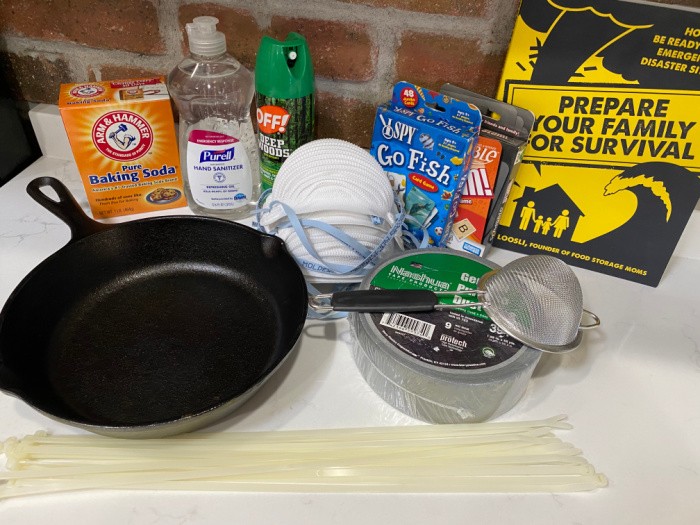
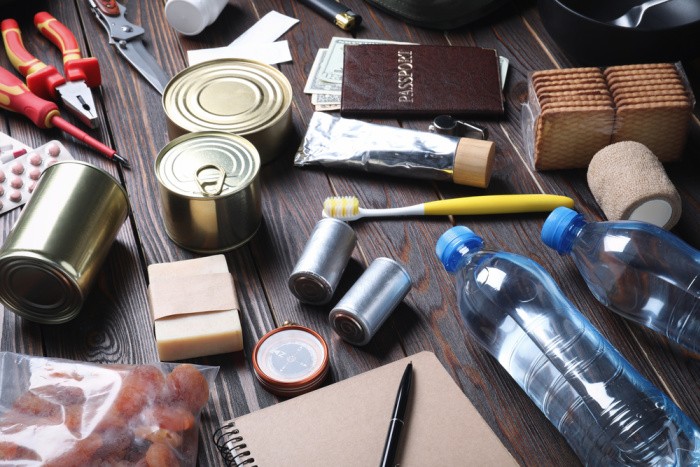
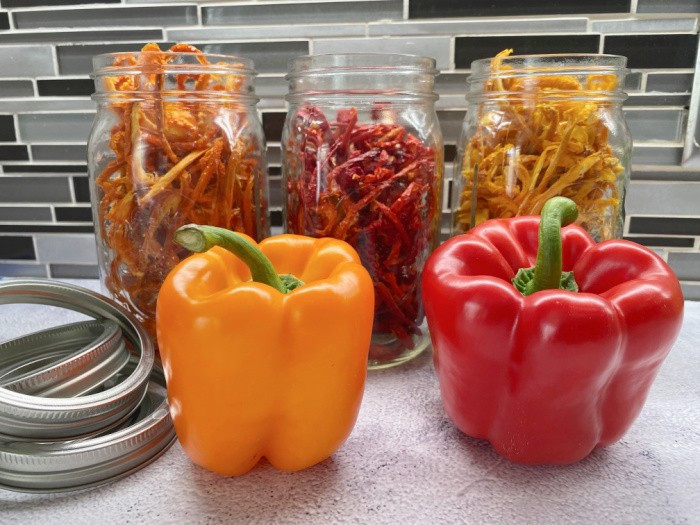

















Thanks for the tip on using tepid water to rehydrate FD ingredients. But I need to point out that for rehydrating FD pre-made meals, while you can use tepid water to get it ready to eat, if you can heat water and use that it will be more appetizing as folks expect hot meals.
For LTS, I store a mix of FD ingredients and FD pre-made meals, so while I have flexibility to make various meals, I also have convenience foods if everyone is sick at the same time. Ideally someone in the group will be able to cook from ingredients for everyone, but I’m always thinking “what if?”, hence the convenience foods.
Hi dmwalsh, it’s all about prepping or thinking what if, you are just like me! There are FD meals that need boiling water, there are so many different companies, Great comment, Linda
I have Freeze dried, canned, and home canned. But, it was a little at a time. I just did something (not a lot) until I had a good amount of food stored.
Don’t forget water.
Hi Janet, I started out the same way. I bought a little at a time. Then two years I really stocked up on water big time. That’s when I felt the most secure. We can do this, a little at a time! Great comment, Linda
I decided to look at this article and glad I did because you answered some of the questions I was asking you recently in regards to shelf life of, specifically of dehydrated foods purchased or made at home and stored with or without a Food Saver machine.
Where I get confused is the different data or numbers from different books, websites and even canning books. This prompted me to look over books that I have and then try to match and compare their information with yours, so I know what is right and what is either simply old info, suspect or just plain wrong.
Incidentally, we are in hurricane season now in Florida and the weather people are advising people to get themselves prepared.
Hi Frank, I sometimes shake my head when I see stuff on the internet. I sure hope some of these people have a lot of upset tummy and diarrhea medicine stocked up. They’re going to need it if their food is stored improperly. May God bless those that have bad food storage. Yikes, Linda
Enjoyed article, use a lot of freeze dried product and find them convenient and good tasting. Have not tried instant refried beans but plan to order some! I am u7 and still enjoy canning. Got to pressure canners first one my mother and dad bought from Sears in 1954 it is a mirro and gaskets ect are still available for it. Older daughter and I were discussing when the lady peas will be ready here in Georgia. The can peas, beans, potatoes in season. Also boiled peanuts, vegetative , chicken and beef stock year round. In the fall we dry pressure can shelled pecans. Last year I think it was 50 cups. Besides canning we ferment sauerkraut and red onions plus garlic. These are mostly done in the fall based
On the moon phases. This is something both my daughters and their family’s look forward to and everyone agrees the store bought canned stuff pails in comparison to properly canned homemade. You can’t go wrong if you use and fol,ow the book. Your articles are such a inspiration to all of us. Keep on your good work and God bless
Hi John, you are so kind with your words, thank you. Man, you have a Sears Mirro 154 Sears pressure canner, I LOVE it! You have canned things I have never tried canning! What an inspiration to me! Thank you for sharing what you preserve! I LOVE it! Linda
Hi Linda, I’m sure you have covered this, but how many DAYS of water do you recommend storing? Even though I have been prepping for years, I have begun worrying about this lately as we live in the desert and it will take a tremendous amount for our family of six, large dog, plus gardening. I don’t think I can possibly store “enough”, so am seriously considering buying a place on a creek! At what point do you just pray that you have enough? Thanks for your help.
Hi Roxanne, this is a very good question. I have just over 1000 gallons stored. I also have a swimming pool filled with water. It could become poisonous without the pumps cleaning it, etc. I could purify it if I had too. Roxanna, I would love to move near a creek or river as well. This is my problem, I do not have the means to sell and buy another property with a lot of water running through it. Plus, I worry, the creek or river could dry up or be diverted by others. Then I’m back to square one. Oh, as far as how many days of water, I believe a minimum of 30 days worth of water should be stored. The American Red Cross states one-gallon per person per day. I believe it should be 4 gallons per person per day. So for one person that is 120 gallons for one person for 30 days. It’s all about the space we have available to store it. I have water stored in my house, the garage, and outside my home. Please start with a little with good containers and start accumulating a little at a time. Linda
You mentioned the home canned items and the right items for us. I have had a garden for years and can everything I can get my hands on. I have something like 80 some jars of Green beans, I have tomato products plus: jelly, relish, apple sauce plus many many more items. Now this is coming in really handy right now I hurt both my knees over the winter. I don’t have my usual garden but I do have tomatoes in huge flower pots and peppers in smaller flower pots, I have cucumbers in a huge flower pot and zucchini planted next to my storm shelter. I can’t plant Green beans this year so my storage will work till next year when I hope to plant again.
I remember some time back you mentioned a young lady who said that there was never a emergency where she lives. Well here in MidMissouri right now this is what we are going through. I live within 5 miles of the Missouri river which is in MAJOR flood stage. It is almost cutting off the main
highway into Jefferson City, some of Jeff City is flooded too. Not only that but a few weeks ago something happened in Jefferson City which has never happened before, it was hit with a EF 3 tornado. I live 15 miles from it but believe me I was scared enough. The mess it left was unreal. You see it on TV and you think WOW those poor people but this time it was close to me. The thing that
made it worse it came around midnight but the good thing not only was there warning sirens but also
the TV stations carried the warnings all night. I know I was glued to my tv from 7pm till after 1 am.
Oh the one thing about the flooding with being only 5 miles from the river I am up on the hill so if
I get flooded we will all need a ark. So to say that emergency’s in your neighborhood doesn’t happen, just wait cause you never know.
Oh June, my sweet friend, I am so worried about you!! This year has been crazy for so many people. I’m so glad you have all those green beans! They are the best! I’m glad to hear you can still grow many things in pots to get you through this year. I had to have both knees replaced about 10 years ago. Yikes! I can’t imagine the fear you had listening to those sirens. I’m praying for you and your neighbors! God bless you, Linda
For long term food storage I agree with you, but I’d add MRE’s, especially the self heating types. I mostly like the Menu A recipes but to each their own. The main benefit is no water needed to prepare them.
I say this while snacking on homemade banana chips.
Hi Ray, oh I love banana chips! MRE’s do have their place that’s for sure. No water needed to make a meal will be critical for sure after a disaster! Linda
Hi Linda,
Great article. And like some of the other readers, was surprised about not using hot water on the long term foods. But I have a question about storing spices and baking products for long term. Several years ago, I bought a bunch of different spices and stored them in 5 gallon buckets in a cool, dark location. I was re-visiting my stock this weekend and found unopened spices that “expired” 5 years ago. How do I keep them long term or do I need to just rotate them annually? Your thoughts or those of your readers will be appreciated.
HI Pam, this is a great question on the spices. I grew up with spices that I’m sure my mom had for ten years or more. When I was teaching classes at a fancy Bosch kitchen store years ago I learned spices lose their “flavor” after 6-12 months. Well, I nearly choked when the owner mentioned to replace them every year. What? I learned how to rotate them more often and buy smaller jars. Here’s the deal, I bet all of us have some say for instance parsley flakes in our cupboard. If place two jars next to each other one old and one new, they will look different. They will also smell different. One that is newer has more flavor and the other has very little or no smell at all. It’s a personal preference. I used to buy large jars, not anymore. Linda